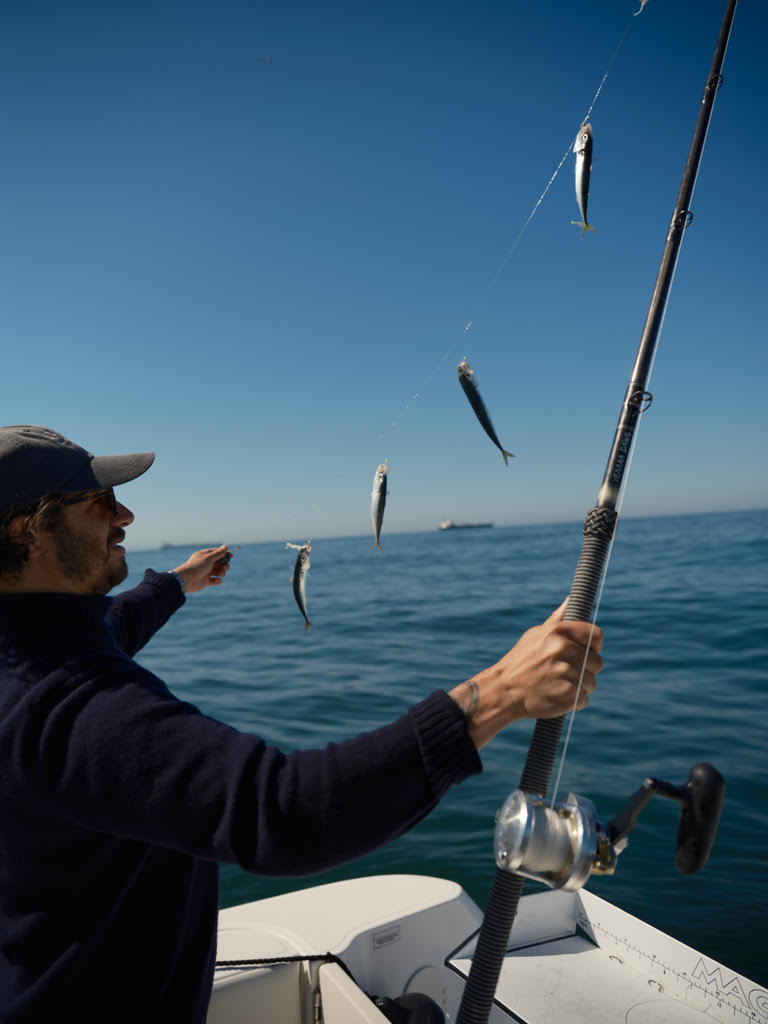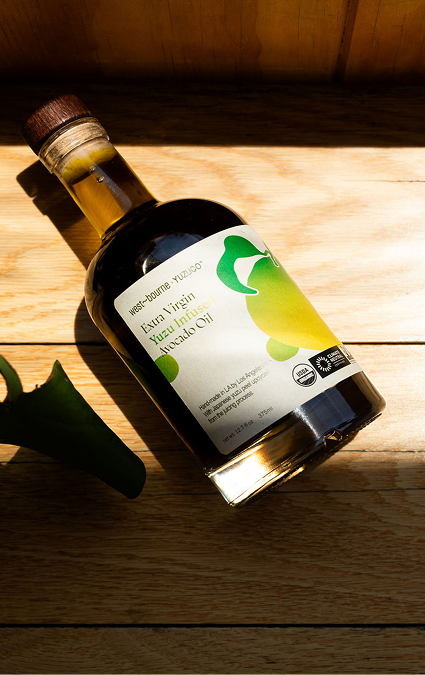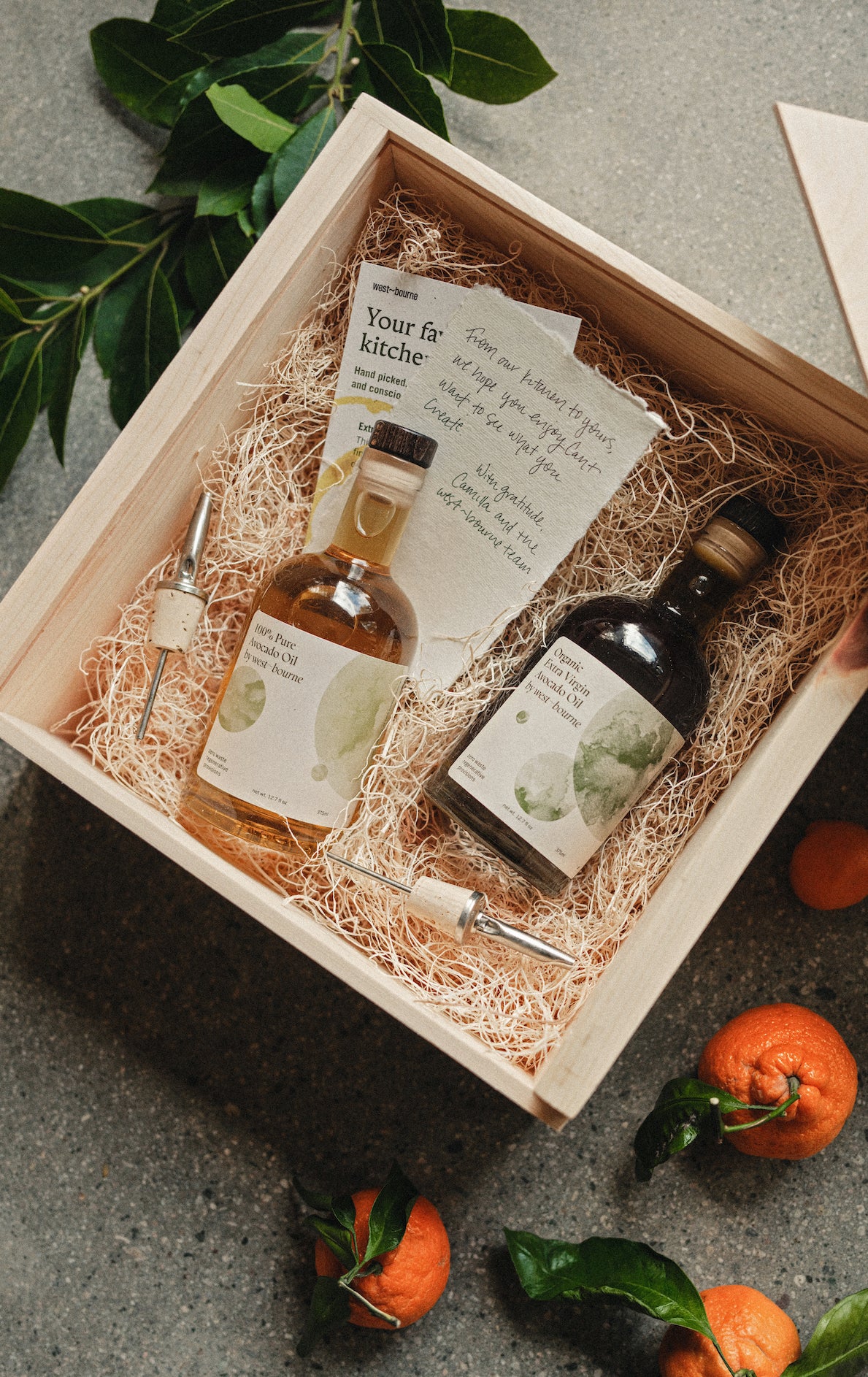By Chefs, for Chefs: In Conversation with Ari Kolender

Our organic, regenerative extra virgin and pure avocado oils are reliable standbys for the chefs in our direct community and beyond—beloved for their efficacy and versatility in both high-heat cooking and finishing. This is why we are introducing a new series, "By Chefs, for Chefs," profiling individual chefs, their culinary journeys, and respective commitments to sustainability and/or regenerative sourcing.
Sustainability is a core topic at the heart of fishing and farming today, and there is much to learn. Here, we turn to acclaimed chef Ari Kolender, whose recent cookbook How to Cook the Finest Things in the Sea: Broil, Bake, Poach & Grill Your Way to Exceptional Fish & Shellfish, was named a Best New Cookbook by the Los Angeles Times and Publishers Weekly.Ari hails from Charleston, South Carolina and while he wasn't from a household that cooked much fish, he did grow up fishing, lounging, and surfing on the shore. He crabbed from friends' dinghies and worked at Hyman's, a restaurant on Market Street in Charleston, where the city's three rivers converge. A James Beard Foundation Award semifinalist and a 2021 Rising Star Chef, Ari is perhaps best known for opening Found Oyster in East Hollywood in 2019. Today, he also runs Queen's Raw Bar & Grill in Highland Park, Los Angeles, and The Bell in New Orleans.
Ari is all about "laid-back seafood," with a modus operandi centered on less handling, less fussing, and less worrying. "Messing with it messes with it," he says. He also champions sustainable sourcing, preservation techniques, and a broader diversity of seafood: oysters, anchovies, yellowfin tuna, shrimp, Jonah crab, and brook trout, he believes, should enter the everyday vocabulary for chefs, home cooks, and diners alike.
Read on for his modern, thoughtful approach to seafood—and practical tips for cooking exceptional fish and shellfish.

Can you give us a quick recap of your career in food?
I began cooking professionally after attending culinary school here in Los Angeles. At 21, I immersed myself in the culinary scene and landed a lucky break as a cook at Providence [Michael Cimarusti's two-Michelin-starred restaurant]. After honing my skills there, I helped open Red Machine before moving back home to Charleston, South Carolina. In Charleston, I was fortunate to maintain a focus on seafood, working for The Ordinary and later as the opening chef at Leon's Fine Poultry & Oyster Shop. I returned to LA in 2015 with my sights set on creating something of my own. Four years later, that opportunity came with my partners Holly, Adam, and Joe, and we opened Found Oyster. Today, we also have a second raw bar-centric restaurant, Queen's Raw Bar & Grill, where I continue to work with them on recipes, training, and mentoring chefs and partners. My cookbook, How to Cook the Finest Things in the Sea, has been in the works for the past four years. It's a collection of how-to techniques and no-frill recipes, distilled from two decades in some of the country's best seafood restaurants.
Since you didn't grow up in a household that cooked a lot of fish, do you have a special memory of one of your first experiences enjoying seafood?
I was about 10 years old when my family took a trip to Miami to visit our cousins. My Uncle Barry, an avid spear fisherman, was pumped because it was spiny lobster mini-season, and took the entire crew out on the boat to show off his skills. He delivered, and we came back with about two dozen spiny lobsters. I learned how to prepare them for the grill—de-shelling and cleaning them by hand. It was the first time I thought, maybe this seafood thing isn't so bad!

What drew you to seafood?
I was lured by the diversity and beauty of the ocean. I'd always loved the sea—growing up surfing and fishing—but I hadn't cooked or eaten much of what came out of it. The more I learned, the more I wanted to know.
How have you put sustainability into practice in your restaurants and in your own home kitchen?
For us, sustainability starts by sourcing—building relationships with fishers, farmers, and vendors to ensure we're receiving seafood that's responsibly grown, harvested, and caught. After that, it's on us to have reverence for the product. That can mean a lot of things, but for example, we save shrimp shells to make stock for our grits. When butchering fish, we make use of the odds and ends—even the heads—by incorporating them into dishes on the menu rather than tossing them in the bin.
Can you share some advice on sourcing sustainable seafood?
It's important to seek our fish and shellfish sourced from the waters of the United States whenever possible. Our fisheries are the most regulated in the world and are overseen as such. Diversify what you eat! If we all stick to shrimp, salmon, and tuna, we're headed for trouble. Instead, try black cod or halibut. Seek our scallops, mussels, and seaweed—along with oysters and clams. These are some of the most sustainable ingredients available. They're low-impact when farmed, and replenish ocean health by filtering with water and providing safe harbor for other species.


What's an overlooked fish or shellfish?
I have to go with black cod. It's often only seen on menus as "miso-baked," but it's an incredibly delicious and sustainable option with so much more potential. At Queen's Raw Bar & Grill, we serve it broiled with casino butter and dressed lettuces.
Your cookbook features 100 recipes spanning methods of broiling, baking, poaching, and grilling. Which recipe are you most proud of and why?
Let's talk scallops. There's a recipe for Scallops with Espelette Butter in the "Baked & Broiled" section of the book. It's designed to teach you how to properly identify the different parts of a scallop and how to achieve the right caramelization by understanding the relationship between salt, heat, and the scallop itself. It's fast, easy, and tasty—a great jumping-off point for anyone looking to dip their toe into cooking seafood. Scallops also freeze really well, so buy a few extras and practice those chops before the big show.
Can you give us a pep talk about cooking seafood (beyond white fish filets and salmon) at home?
Give it a shot! It's not as scary as it seems. Don't overthink it. Just arm yourself with the right tools and a bit of know-how to get the job done. The mantra of the book is "do less," and I stand by that statement. Cooking great fish and shellfish is, in fact, quite easy. My book will help bring that confidence level up!
What's your favorite way to use west~bourne avocado oils in your cooking?
Honestly, I have yet to find a way in which west~bourne Avocado Oil has notbeen a step up. I especially like using it in salads or to finish dishes that are served raw, deserving of its elegant, rich flavor.

Scallops with Espelette Butter
1/2 cup (1 stick) unsalted butter, cubed, at room temperature
2 garlic cloves, grated on a Microplane
1 1/2 teaspoons fresh lemon juice
1 1/2 teaspoons soy sauce
1 teaspoon espelette pepper
Espelette Butter
In a medium bowl, combine the butter, garlic, lemon juice, soy sauce and espelette pepper. Using a whisk, a rubber spatula or gloved hands, mix the butter until it is fully combined. Store in an airtight container in the refrigerator for up to 4 days or in the freezer for up to 4 months. This makes just over 1/2 cup.
Broiled Scallops
1. Position an oven rack in the highest position and heat the broiler to high.
2. Heat broiler-proof stainless steel skillet (see Note) on the stove over high heat for about 2 minutes. Add the oil to the pan, and once it is smoking, season the scallops with kosher salt. Locate the top or bottom of the scallop with the largest surface area and place the scallops, large side down, into the pan.
3. Immediately transfer the hot skillet to the broiler. Broil the scallops for 90 seconds, remove the pan from the broiler (using a pot holder or towel, please), and add the espelette butter right in the middle of the pan. Return the pan to the broiler and cook for about 30 seconds, just until the butter is melted and frothy but not burned.
4. Remove the pan from the oven and use a spoon to baste the scallops in the butter. Transfer them to a serving platter and pour all the melted butter over them. Finish the scallops with a squeeze of lemon, a sprinkle of flaky sea salt and the chives.
Serve with crusty bread and some toothpicks for easy eating.
Adapted from How to Cook the Finest Things in the Sea by Ari Kolender and Noah Galuten (Artisan).
Learn more about Ari, his new cookbook, and his preferred kitchen tools at Ari Kolender.







